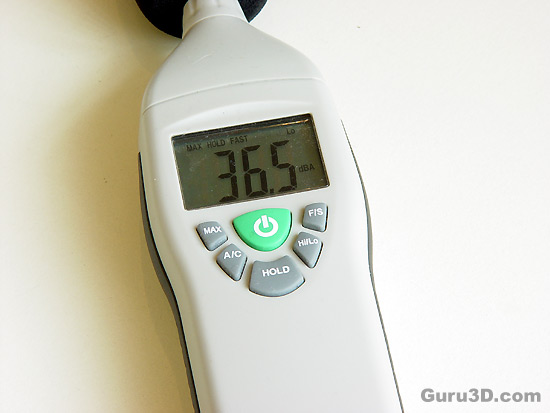Page 6 - Real world testing
Load testing the PSU
How do you test a PSU? In theory it's not that difficult, but in real-life situations it's very difficult with such a highly rated PSU. Luckily three-way SLI and Quad Crossfire is just around the corner so in the future this stuff will be easier to measure.
But the fact is that we do not have the gear in house to be able to stress this PSU to it's full capacity. We can connect everything we want, add more devices and overclock, but even then we'd normally peak at 500-600 Watts. But hey, let's try that out and see what happens.
So here's what we did. We took:
- eVGA Force 680i SLI mainboard (consumes heaps of current)
- Core 2 Quad Q6600 Processor (overclocked to 3 GHz)
- 2x GeForce 8800 GTX cards setup in SLI.
After the installation we loaded the latest drivers, and enabled a seriously funky gaming experience and power hungry system. Pretty spiffy setup, don't you think?
Now to stress a little more we overclocked the CPU cores towards 3.0 GHz, had the DDR2 memory running at 1147 MHz and the two GeForce 8800 GTX cards toward 625 MHz on the core and 2100 MHz on the memory.
For the test we used X3: the reunion as it's proven to be a little more demanding than 3DMark. It's a total bitch on graphics cards; it makes them sweat. It's also multi-core threaded. I wanted to go for the Crysis demo as I know the quad cores would be fully utilized, yet the demo does not support SLI which would leave out 150 Watts of consumption right there.
We enabled 8xAA and 16xAF to make sure the graphics cards were working hard. The balance of these settings also ensures me that that the CPU is utilized as much as can be.
Now at this point I realized that we're stressing the PSU slightly. So I added fan's, some extra lighting, water-cooling.
Me monitored the primary voltages in both IDLE and LOAD (fully utilized) modes. We noted down the lowest and highest value we see and that is the fluctuation. If a PSU is unstable we'd see much fluctuation, differences and discrepancies which can result in system instability.
A 5% fluctuation is perfectly acceptable, so 12 Volts should remain between 11.4 - 12.6v as you can see the PSU when stressed stays FAR from that.
There's no such thing going on for the for the Everest 1010W. It is stable. During the load test several times I felt to see if the PSU was warm, it remained cold at all times. It feels like it's hardly doing anything at all. Really impressive as wattage did not peak over 500 Watt where other PSU's did have much higher loads (remember what I told you about power efficiency). This PSU's efficiency is really good and it's showing.

Granted; it's really hard to stress PSU's like these. The fact that it remains stone cold at a near 500 Watt power draw however tells me that it can easily cope with the load.
Quite honestly, I did my best to stress the PSU. In a 3D intensive test run with 100% utilization, in an overclocked environment this youngster is stable as can be. Remember this was tested on a NVIDIA GeForce 8800 GTX (overclocked) SLI system with an overclocked Quad Core Q6600 processor.
Sound levels (dBA)
Well, the lack of it. As usual we grabbed our dBa meter, enabled the PSU by hot-wiring it and started to listen if it made any significant noise. Short and simple it's silent, yet the fan in the PSU made a slight weird noise. Not at all irritating, but it probably was slightly damaged somehow. But even then we measured a nice level below 40 dBA.
The human hearing system has different sensitivities at different frequencies. This means that the perception of noise is not at all equal at every frequency. Noise with significant measured levels (in dB) at high or low frequencies will not be as annoying as it would be when its energy is concentrated in the middle frequencies. In other words, the measured noise levels in dB will not reflect the actual human perception of the loudness of the noise. That's why we measure the dBa level. A specific circuit is added to the sound level meter to correct its reading in regard to this concept. This reading is the noise level in dBA. The letter A is added to indicate the correction that was made in the measurement.
All in all, very silent and thus highly recommended to any of the audiophiles that like silence (yours truly included). As always we measure 75 CM away from the product (usually the distance between you and a desktop computer), and yes ... this test is always a tad subjective yet we measured ~36 DBa and that's including surrounding noise levels, and that's just fine.

